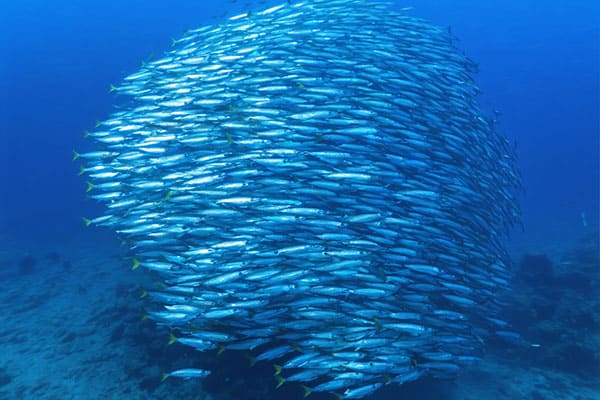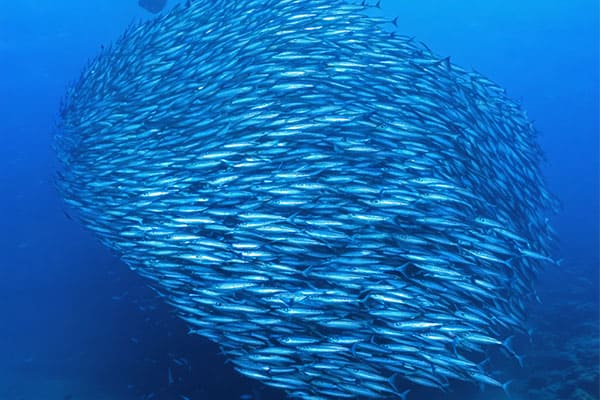I remember the first time I saw a live mackerel—it was darting around in clear, salty water, and I was mesmerized by its lightning-fast moves. Mackerel thrive in different oceans around the world, but they all share one thing: a taste for calmer, nutrient-rich waters.
- Mackerel generally prefer temperate and subtropical seas, often forming large schools along coastlines with abundant plankton and small fish. These areas provide the ideal conditions for them to feed, breed, and migrate seasonally. Because of their speed and agility, mackerel populations can cover vast distances, making them a popular choice for local fishermen and big commercial fleets. From the Atlantic to the Pacific, you’ll find mackerel living in regions rich in prey and comfortable sea temperatures.
It’s fascinating how these fish navigate the open ocean.
Why Do Mackerel Prefer Coastal Waters?
Mackerel often gather near coastal areas for a simple reason.
They chase the food. Plankton, shrimp, and small fish thrive in coastal waters, creating an endless buffet for these swift predators. This concentration of prey makes coastal zones a magnet for mackerel.
- Mackerel frequent coastal waters because of the plentiful food supply and milder ocean temperatures. Warmer months see them moving closer to shore, while cooler seasons may drive them into deeper offshore zones. For a supplier or wholesaler, understanding mackerel migration patterns can ensure a steady supply of frozen fish, whether you’re a factory or among the significant proveedores in seafood markets.
Dive deeper below to learn how mackerel’s coastal preference shapes fishing practices worldwide.
Do Mackerel Migrate Long Distances?
Mackerel are seasoned travelers, often migrating hundreds of miles each year.
Some species migrate from chilly northern waters to warmer southern seas, following abundant prey. These migrations can significantly affect catch rates for wholesalers and factories that rely on stable sourcing to keep their businesses stocked.
- Mackerel undertake long migrations to optimize feeding and breeding opportunities. When plankton blooms or water temperatures shift, they move to prime feeding grounds. This seasonal shuffle can create challenges for suppliers and proveedores who aim for consistent delivery windows, especially when the fish shift location faster than you’d expect.
They can be here one week and gone the next, so let’s look at why these journeys matter for everyone involved in the fish trade.
Dive Deeper: Tracking Mackerel Migration
Mackerel migrations might sound complicated, but they’re a clever survival tactic. Below, I’ve broken down some key points to help you understand what drives these fish on their grand journeys:
Seasonal Shifts and Temperature Changes
- Thermal Comfort: Mackerel prefer moderate waters, so they move if it gets too cold or hot.
- Feeding Opportunities: Seasonal plankton blooms spur them to chase prime feeding grounds.
Breeding Grounds
- Spawning Cycles: Certain mackerel species spawn in specific areas and then scatter once breeding is done.
- Influence on Market: Sudden location changes can temporarily spike or drop fish availability.
Impact on Suppliers and Proveedores
- Logistical Planning: If you run a factory or frozen fish business, you must plan your sourcing around migratory patterns.
- Risk Management: Overfishing in one area can harm overall stock, so you may have to shift to another region.
| Migration Factor | Effect on Supply Chain | Potential Action |
|---|---|---|
| Temperature | Seasonal population changes | Adjust sourcing location |
| Food Abundance | Fish cluster in hot spots | Increase supply from hotspots |
| Breeding Cycle | Irregular fish movement | Balance inventory year-round |
By staying in tune with these migrations, you can keep up with the ebb and flow of mackerel availability, ensuring a steady stream of fish for your customers without getting caught in seasonal shortfalls.
What Role Do Depth and Water Temperature Play?
Depth and temperature can make or break a mackerel’s comfort zone.
They usually prefer mid-range water columns in seas that range from cool to mildly warm. If the water is too warm or cold, their feeding activity drops, and they migrate to more suitable areas.
- Mackerel thrive in waters typically around 8°C to 20°C, though some species tolerate broader ranges. This sweet spot ensures the fish maintain a healthy metabolism and remain active hunters. If you’re sourcing from a region that’s colder or warmer than usual, you might find mackerel in deeper or shallower waters, respectively.
You can read on to see how these preferences affect commercial fishing and might affect your next purchase plan.
Conclusion
Mackerel live in temperate and subtropical seas, favoring coastal regions with abundant prey. Understanding their migratory habits and the factors that shape their habitat is essential for anyone, from local fishers to global seafood businesses. At Yanghuafishery, we keep track of these details so that no matter where mackerel roam, we’re ready to supply the best quality fish to support your growing business.




